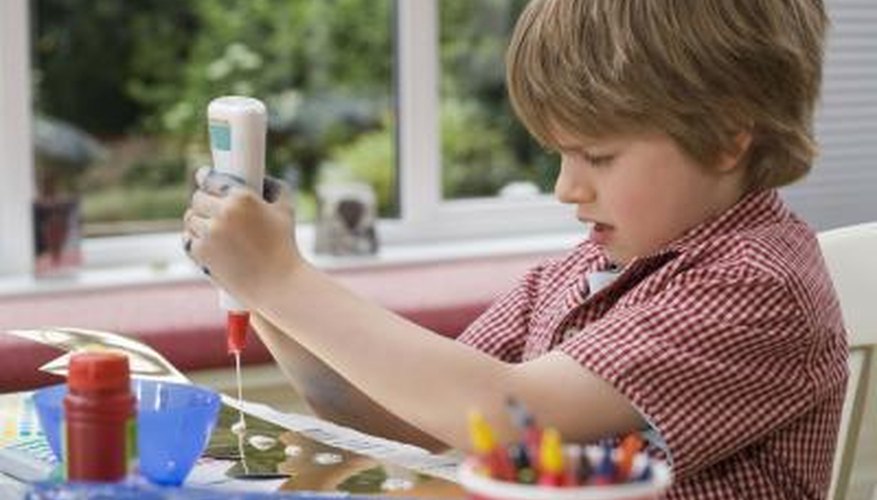PVA, known as polyvinyl-acetate glues, function as a bonding agent for a variety of materials, components and structures. Elmer's white glue and Titebond III, a yellow outdoor glue for extreme environments, are two popular choices for the craftsman and carpenter. All PVA glues can withstand forces of 3500 to 4000 psi (pounds per square inch). PVA glues come in several types.
Type 1 Waterproof
Type 1 waterproof PVA glue, such as that used in Titebond III, contains water in the formula, but resists water erosion and separation, making it a good choice for exterior applications. Type 1 waterproof PVA glue contains polymer strands that become entangled in a bonding process. Type 1 PVA glue functions best when used on outside or exterior wood trim and wood fasteners, as well as mailboxes, birdhouses, plastic pools and outdoor furniture. It completely repels and resists water damage.
- Type 1 waterproof PVA glue, such as that used in Titebond III, contains water in the formula, but resists water erosion and separation, making it a good choice for exterior applications.
Type II Water-resistant
Type II water-resistant PVA glue, such as that used in Titebond II, also contains water in the formula and resists some water erosion and separation. Type II PVA glue has a similar polymer formula as the type 1, however, it does not have the complete waterproof capability as Type 1. The formula in Type II glue has medium water-repellent qualities that fall between non-waterproof and full-waterproof. Type II PVA glue also functions well on exterior wood trim and joints, provided it doe not come in prolonged contact with water, at which point it could eventually break down.
- Type II water-resistant PVA glue, such as that used in Titebond II, also contains water in the formula and resists some water erosion and separation.
Type III Non-Water-Proof
Type III PVA glue has no water-resistant qualities. One of the best-known type III PVA glues comes from Elmer's. The formula contains nearly 50 per cent water, making cleanup easy. Glued surfaces have to be clamped until they achieve 15 per cent to 20 per cent of their bonding strength. A secure bond usually take about one hour, and for a complete cure at least 24 hours must elapse for full-strength adhesion. Type III PVA glues function best on lighter household materials, such as cardboard, light, thin wood panels, paper, book binding, some cloths and light ceramics. They bond most efficiently to porous materials.
- Type III PVA glue has no water-resistant qualities.
- A secure bond usually take about one hour, and for a complete cure at least 24 hours must elapse for full-strength adhesion.
Colours
PVA glues come in a variety of colours, and usually hold the shade of their original colour after they have set. The Elmer's variety glue has a pure white appearance, as do other inexpensive classroom and project glues. Some glues have a honey or cream-coloured texture, such as the Titebond II brand. Elmer's woodworking glue appears yellow. Titebond III PVA glue appears tan before and after set. Generally, the darker colour indicates its preference for use in exterior environments.
- PVA glues come in a variety of colours, and usually hold the shade of their original colour after they have set.
- The Elmer's variety glue has a pure white appearance, as do other inexpensive classroom and project glues.
